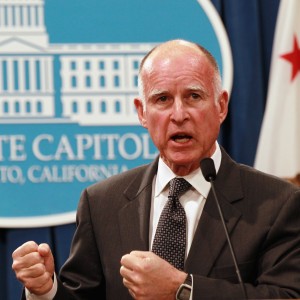Prop. 2 amends the state constitution to increase the amount of tax revenues automatically set aside each year by state lawmakers. That amount will increase in years in which the most volatile state tax revenues, those that come from the capital gains of the most wealthy, are at their peak. The measure limits the instances in which elected officials at the state Capitol can tap the reserve funds, and it earmarks a sizable portion of the money in the immediate future for repayment of debts the state incurred during the fiscal crises of the past decade.
The proposal was placed on the ballot by Brown and legislators as a substitution for a 2010 version of a reserve fund boost, and represents perhaps the most far-reaching effort by state lawmakers to smooth out the long-term impact of tax revenues that have fluctuated by billions of dollars in boom and bust economic times.
But Prop. 2 goes beyond the traditional budget reserve in both its provision for possible savings earmarked for public schools and a related 2014 law that would limit the size of some cash reserves held by local school districts. The latter law, quietly attached to Prop. 2 (but not part of the actual constitutional amendment), was criticized as a political giveaway to teachers unions that wanted the school districts in question to spend more money on salaries and benefits.
Others pointed out, not quite as loudly, that Prop. 2 is a weaker option than a broad-based adjustment to the tax system in California -- an adjustment that could, for example, include sales taxes on more services while lowering some personal income taxes. But tax reform on that scale has been discussed several times in Sacramento over the past decade and has been politically impossible to achieve.
Brown, urged by many to take on the issue should he be elected to another term as governor, has largely remained silent on the tax structure. Instead, he argued that Prop. 2 is a reasonable and prudent way to provide for backup cash during the state's most lean fiscal periods. And the ballot measure was one of a pair of propositions the governor used as a proxy re-election campaign in the final weeks of the election season.

